Mining Claims
Dozens of creeks in the Cariboo were worked and re-worked for gold over the years.Creeks like Antler, Cunningham, Lightning, Lowhee, Nugget Gulch, and Williams became famous to those who fell under the spell of that precious yellow metal.
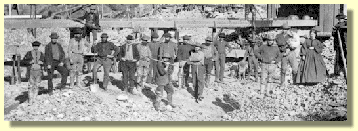
|
| The Cameron Claim (BC Archives: G-00800) |
One of the first strikes in the Cariboo was made in 1860, when prospectors found gold at Keithley Creek. Nearby Antler Creek had gold so close to the surface that in some cases you didn't even have to dig for it. A miner could make at least $40 a day, and sometimes up to $300 a day. Some prospectors had been known to get $75 or $100 dollars worth of gold in a single pan! By early 1861, Antler Creek had been all staked out. There was no room for any new claims. This created many arguments over the boundaries of the existing claims.
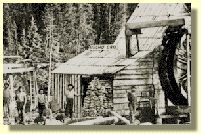
|
| Mucho Oro Claim at Stouts Gulch (BC Archives: A-00349) |
In the spring, the miners had more work to do before they could begin taking gold out of the ground. Large trees had to be chopped down, and then turned into lumber. The lumber was used to build mining equipment, such as rockers, sluice boxes, and flumes, as well cabins and shelters. More often than not, gold mining was a lot of really hard work before you got to see any gold at all!
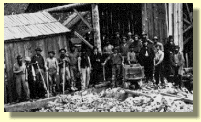
|
| Aurora Gold Mining Claim on Williams Creek (BC Archives: A-00782) |
The Cariboo Gold Rush, like most gold rushes, was a mixture of both individual successes and failures. News about the rich strikes quickly spread back to Victoria, and San Francisco, prompting many more people to leave for the gold fields of the Cariboo. Many of these "would be" prospectors arrived with no knowledge of mining, and minimal supplies. With no room for new claims on the existing sites that were producing gold, many of these prospectors turned around and headed home.
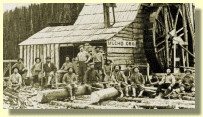
|
| The Mucho Oro Goldmining Co. on Lowhee Creek (BC Archives: A-00613) |
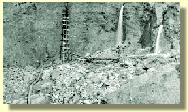
|
| Six-Toed Pete Claim on William's Creek (BC Archives: C-09570) |



|
Last updated November 30, 1998 Produced by Steven Davies and the Schoolnet Digital Collections Team. |

|
